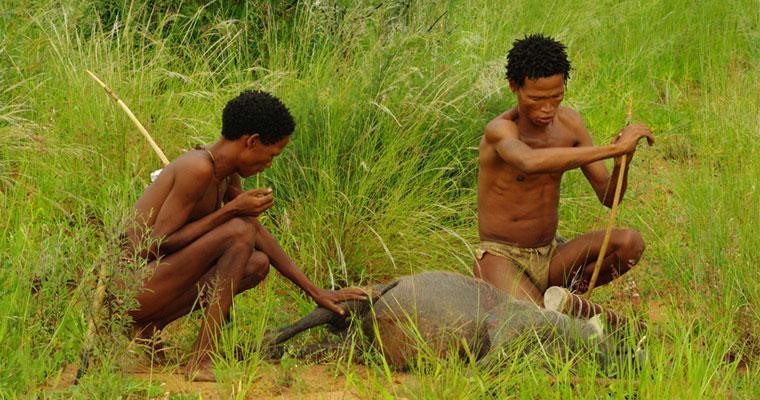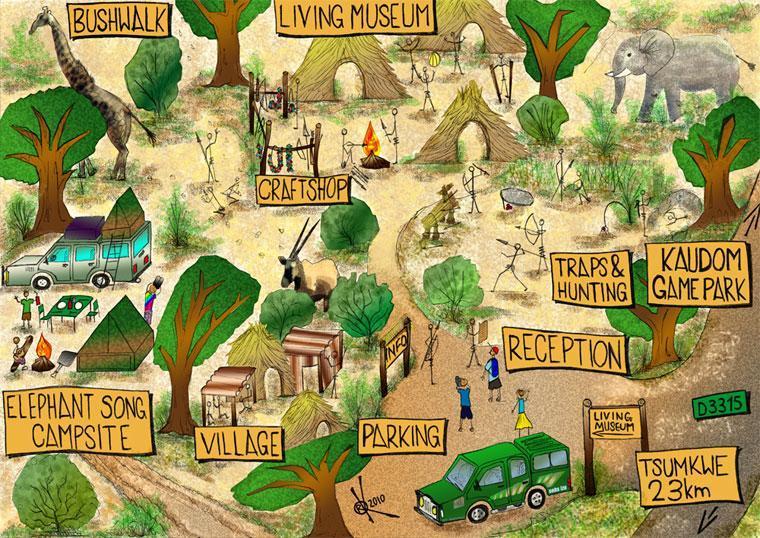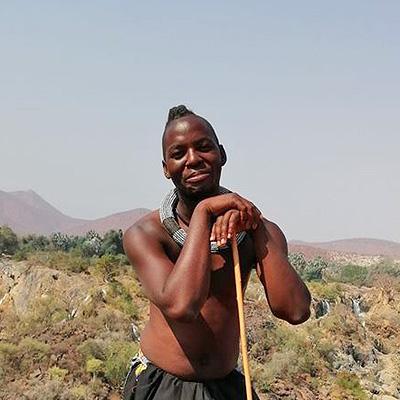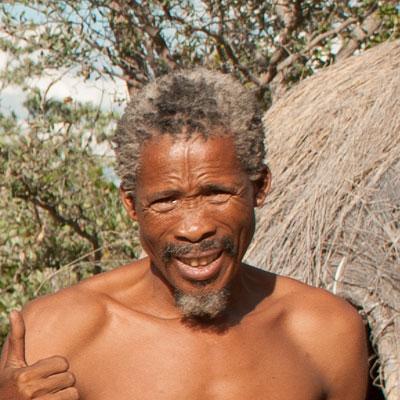The "Living Hunter's Museum" of the Ju/'Hoansi-San
The "Living Hunter's Museum" of the Ju/'Hoansi-San close to Tsumkwe offers visitors the exclusive possibility within Namibia to experience an original hunt, apart from getting to know a very old hunter- gatherer culture.
 Making fire the old way in the traditional village
Making fire the old way in the traditional village
The pure experience of historic hunter-gatherer culture
Apart from getting to know the fascinating ancient culture of the Ju/’Hoansi, native to the Kalahari desert for thousands of years, experiencing a real hunt with hunters from the Living Museum is the focal point. Here the traditional bow hunt with poisoned arrows, the digging out of spring hares and porcupines, the snare catching of guinea fowls, khoraans and other birds for the daily hunt for food has never been terminated. The San living in this area, the Nyae Nyae COnservancy, are actually the only ones of their cultural group that are officially allowed to still hunt traditionally. Thus they still master the art of reading tracks and are delighted if visitors show special interest herein. The opportunity for visitors to be able to take part in such a hunt is also unique. An English speaking Ju/'Hoansi accompanies the guests and translates everything the hunters are showing and explaining.
 A successful hunt
A successful hunt
Traditions from the past
The Living Hunter's Museum of the Ju/'Hoansi-San was initiated by the San hunter !Amache and was built in cooperation with the LCFN and the family of his wife Beh. The Living museum exists since March 2010 and is be run and managed independently by the San. The San present their culture dressed in historic clothes within the setting of a beautiful, reconstructed hunting village of old days. Great importance is attached to representing the old hunter-gather culture as authentically as possible. Nearly the whole village of //Xa/oba is part of the Museum, from infants to great grandmother and thus they are able to paint an extraordinarily authentic picture of such an old hunter-gather community.
Campsite
Two camp sites are available, each with a dry toilet, bucket shower and braai facilities. The rates are N$ 40.00 per person. Water and Fire wood is available.


















